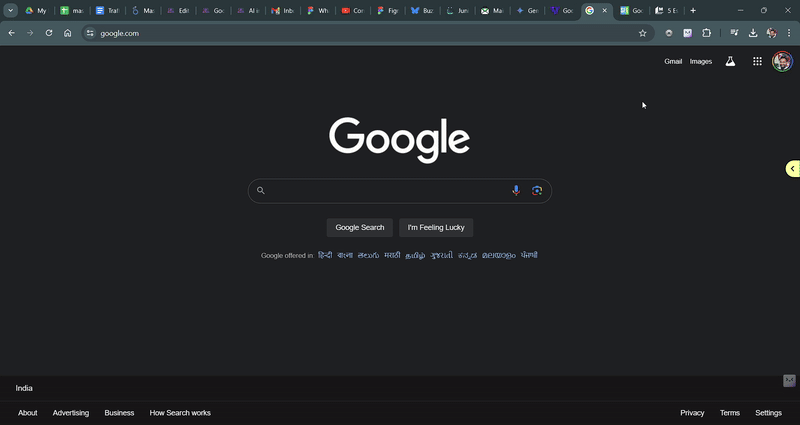In a move that surprised many users and industry experts, Google announced the removal of its continuous scrolling feature from search results. This feature, introduced in 2021 for mobile and 2022 for desktop, allowed users to seamlessly scroll through multiple pages of search results without clicking to the next page. The change has already taken effect for desktop searches as of June 25, 2024, and is expected to roll out to mobile searches in the coming months.
According to a report from Search Engine Land, Google will stop its continuous scroll user experience where Google loads more results as you scroll past the first page of the search results. Instead, you will see the classic pagination bar at the footer of the Google Search results.
Google’s Reasoning
The tech giant explained that the decision was primarily driven by a desire to deliver search results faster. By not automatically loading additional results that users haven’t explicitly requested, Google aims to optimize resource usage and improve the overall speed and efficiency of searches. They cited internal research indicating that automatically loading more results did not significantly enhance user satisfaction.
Danny Sullivan, Google’s Public Liaison for Search, elaborated on this in a tweet, stating that the change is “about making things work better for more people.” He emphasized that Google’s focus is on providing relevant and useful information as quickly as possible, rather than on keeping users endlessly scrolling.
Interface Changes and Industry Reactions
The removal of continuous scrolling will bring back the familiar pagination format for desktop searches, with a “Next” button appearing at the bottom of each page. Mobile users will see a “More results” button instead. While some users might lament the loss of the continuous scrolling experience, others may welcome the return to a more traditional layout.
Industry experts have offered various interpretations of Google’s decision. Some speculate that the move could be motivated by a desire to increase ad revenue, as users might be more likely to click on ads when presented with multiple pages of results. Others suggest that the change might be related to the increasing complexity of Google’s search algorithms and the need to balance user experience with resource optimization.
The Doomscrolling Debate
The removal of continuous scrolling has also sparked discussions about the concept of “doomscrolling,” a term used to describe the addictive behavior of endlessly scrolling through negative or distressing content on social media and other platforms. Some critics argue that continuous scrolling in search results could contribute to this phenomenon by encouraging users to consume vast amounts of information without necessarily finding what they’re looking for.
While Google has not explicitly linked the change to concerns about doomscrolling, the decision aligns with broader industry efforts to promote healthier online habits and reduce the potential negative impacts of excessive screen time. By encouraging users to actively choose when to view more results, Google may be nudging them towards a more mindful approach to information consumption.
Looking Ahead
As Google transitions away from continuous scrolling, it remains to be seen how users will adapt to the new interface and whether the change will have a noticeable impact on search behavior. The company will likely continue to refine its search algorithms and user interface based on user feedback and evolving industry trends. Ultimately, Google’s goal is to provide a search experience that is both fast and satisfying, while minimizing any potential negative consequences of excessive information consumption.
Why This Change Matters: The Impact on Your Website and SEO
The removal of continuous scrolling has significant implications for website owners and SEO professionals:
- Reduced visibility for websites on page 2 and beyond: Websites that typically rank on the second page or lower could experience a drop in traffic as users may be less likely to navigate beyond the first page of results. This highlights the importance of aiming for top rankings on Google’s first page.
- Shift in user behavior: The change in user interface could lead to altered search patterns. Some users might become more discerning, refining their search queries if they don’t find relevant results on the first page. Others might continue to explore further pages, but the added friction of clicking the “Next” or “More results” button could influence how many pages they view.
- Search Console data analysis: Website owners need to closely monitor their Search Console data to understand how this change impacts user engagement and click-through rates (CTR). Tracking metrics like impressions, clicks, and average position for queries where the site appears on the second page or lower will be crucial. Additionally, analyzing user behavior within each search results page (e.g., scroll depth) can provide insights into how users interact with the new interface.
Adapting to the Change
To mitigate the potential negative impact and capitalize on new opportunities, website owners and SEO professionals should consider the following strategies:
- Prioritize first-page rankings: Focus on optimizing your website and content to rank higher in search results. This might involve improving on-page SEO, building backlinks, and creating high-quality content that aligns with user intent.
- Optimize search snippets: Craft compelling title tags and meta descriptions that entice users to click on your website’s link, even if it’s not on the first page. Highlight unique value propositions and key information to stand out from competitors.
- Monitor and analyze data: Regularly review your Search Console data to identify trends and patterns in user behavior. Use this information to refine your SEO strategies and adapt to the changing search landscape.
- Explore alternative traffic sources: Diversify your traffic acquisition channels beyond organic search. Consider social media marketing, content marketing, paid advertising, and other channels to reach your target audience.
By understanding the potential impact of Google’s decision and proactively adjusting your strategies, you can navigate this change and continue to drive traffic and engagement to your website.



